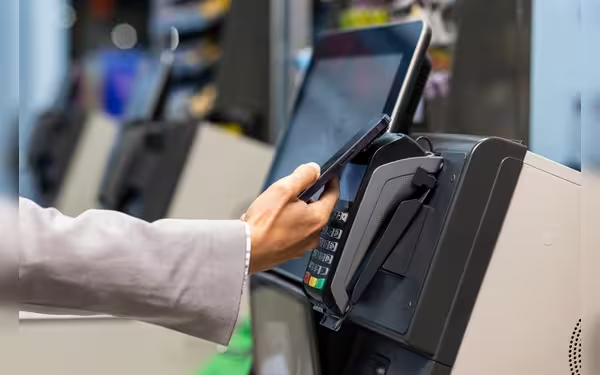Saturday, November 16, 2024 05:46 PM
Saudi Arabia Sees 2.6% Increase in POS Transactions Driven by Education Sector
- POS transactions reached $3.6 billion in recent weeks.
- Education sector transactions surged by 96.8 percent.
- Riyadh led POS spending with a 4.7 percent increase.
 Image Credits: arabnewspk
Image Credits: arabnewspkSaudi Arabia's POS transactions rose 2.6% to $3.6 billion, driven by a 96.8% increase in the education sector.
In recent weeks, Saudi Arabia has witnessed a notable increase in point-of-sale (POS) transactions, reflecting a growing trend in consumer spending. According to the latest data from the Saudi Central Bank, known as SAMA, POS transactions surged by 2.6 percent, reaching a total of SR13.7 billion, which is approximately $3.6 billion, for the week ending October 5. This rise is primarily attributed to a significant boost in the education sector, which has seen a remarkable 96.8 percent increase in transactions.
The education sector's growth is particularly interesting, as it comes after a period of decline since the academic year commenced in August. With students returning to school, families have increased their spending on educational materials and services, leading to a total of SR196.8 million in transactions. Following education, the telecommunication sector also experienced a healthy rise, with spending increasing by 17.4 percent to SR136.5 million. Additionally, the public utilities sector recorded a 13.9 percent jump, amounting to SR61.5 million.
However, not all sectors enjoyed this upward trend. The furniture sector faced the largest decline, with spending dropping by 11.7 percent to SR349.3 million. Similarly, expenditures on electronic devices fell by 8.4 percent to SR238 million, while clothing and footwear saw a decrease of 7.4 percent, totaling SR757.3 million. Other sectors, including recreation and restaurants, also reported declines of 2.4 percent and 1.9 percent, respectively. Despite these setbacks, the majority of industries experienced growth, indicating a resilient economy.
When examining the transaction values, the food and beverages sector maintained the largest share of POS spending, totaling SR2.22 billion. This was closely followed by restaurants and cafes, which accounted for SR1.95 billion, and miscellaneous goods and services at SR1.77 billion. Together, these three categories represented approximately 43.3 percent, or SR5.9 billion, of the total POS value for the week.
Geographically, Riyadh led the way in POS transactions, contributing 34.3 percent of the total, with spending in the capital reaching SR4.71 billion, marking a 4.7 percent increase. Jeddah followed with a 2.2 percent rise to SR1.86 billion, making up 13.6 percent of the total. Dammam ranked third, recording the highest increase at 5.8 percent, with transactions totaling SR697 million. Other cities, such as Tabuk, Hail, and Abha, also experienced growth, albeit at lower rates.
In terms of the number of transactions, Dammam saw the highest increase at 6.8 percent, reaching 9,112 transactions. Hail and Buraidah recorded the smallest increases at 2.9 percent each, with 4,046 and 4,964 transactions, respectively. This data highlights the dynamic nature of consumer behavior in Saudi Arabia, particularly in response to seasonal changes and economic conditions.
The recent surge in POS transactions in Saudi Arabia underscores a positive shift in consumer spending, particularly in the education sector. As families adapt to the new academic year, it is evident that certain sectors are thriving while others face challenges. This trend not only reflects the resilience of the Saudi economy but also provides valuable insights for businesses and policymakers aiming to navigate the evolving market landscape. Understanding these shifts can help stakeholders make informed decisions and strategize for future growth.













